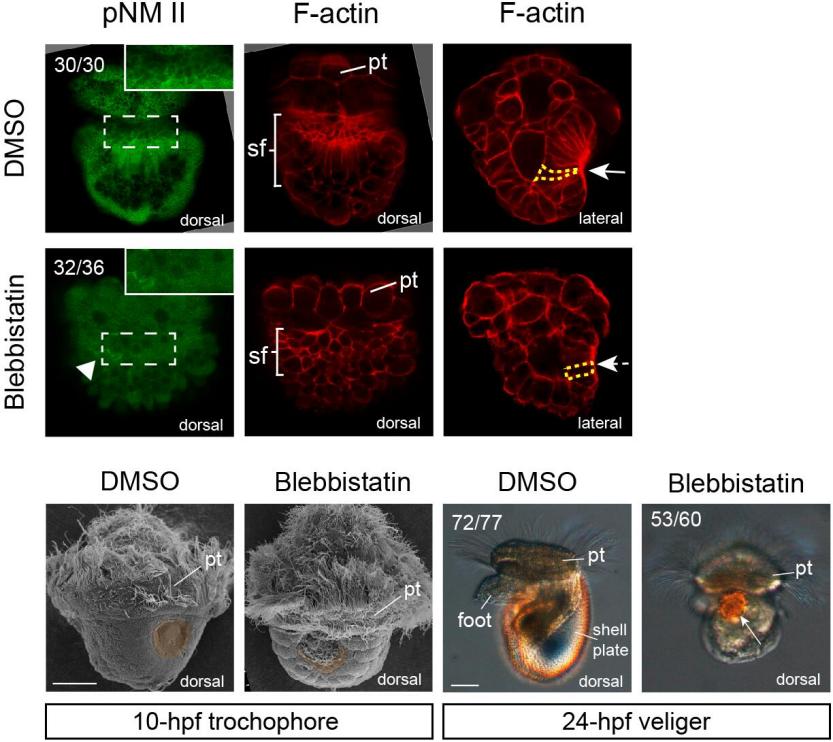A recent study conducted by researchers of Prof. LIU Baozhong's team from the Institute of Oceanology of the Chinese Academy of Sciences (IOCAS) revealed that cytoskeletal molecules (actomyosin) play key roles in the early shells formation of the patellogastropod mollusk Lottia goshimai.
The shell is the main protective structure and thus a key feature of mollusks, which has been one of the key topics in molluskan research. Prof. LIU's team has long focused on the mechanisms of early shell development, and identified a number of genes and cell populations related to shell formation.
In 2020, researchers noticed that one cytoskeletal molecule (F-actin) was strongly aggregated in the shell field of the early embryos of L. goshimai. This suggests that F-actin is involved in early shell formation, which was never reported before.
Researchers thus performed further studies focusing on the roles of F-actin and a related molecule, nonmuscle myosin II (NM II), in early shell formation. Based on functional study, researchers confirmed that NM II played key roles in the morphogenesis of shell field by regulating cell rearrangements and cell shape changes.
In normal development, tissues from lateral and ventral sides rearranged to the dorsal side to form the shell field with a characteristic rosette-like pattern. This critical process was prevented when inhibiting NM II, resulting in a disorganized shell field (despite largely unaffected gene expression patterns). The nascent shell plate could not be formed in these manipulated embryos, which then developed to shell-less veliger larvae.
These results revealed the molecular and cellular mechanisms through which actomyosin regulated shell development. "As one of the few available functional studies focusing on early shell development, this work reports for the first time the roles of cytoskeletal molecules in molluskan shell development," said Prof. HUAN Pin.
"This work is derived from an original finding of the research team and reveals a novel aspect of shell development, which provides essential information for understanding the molecular mechanisms of molluskan shell development and evolution," said Prof. LIU.
The above results were published in Frontiers in Cell and Developmental Biology entitled "Nonmuscle Myosin II is Required for Larval Shell Formation in a Patellogastropod."
The study was funded by grants from the National Natural Science Foundation of China, the China Agriculture Research System, and the Youth Innovation Promotion Association CAS.

Inhibition of NM II causes the disorganization of the shell field and prevents the formation of larval shell plate
Xinyu Liu, Pin Huan, Baozhong Liu*. Nonmuscle Myosin II is Required for Larval Shell Formation in a Patellogastropod. Frontiers in Cell and Developmental Biology, 2022, DOI: 10.3389/fcell.2022.813741.
Weihong Yang, Pin Huan*, Baozhong Liu. Early shell field morphogenesis of a patellogastropod mollusk predominantly relies on cell movement and F-actin dynamics. BMC Developmental Biology, 2020, DOI: 10.1186/s12861-020-00223-3.
LIU Baozhong
Institute of Oceanology
E-mail: bzliu@qdio.ac.cn
(Editor: ZHANG Yiyi)
|
|

Address: 7 Nanhai Road, Qingdao, Shandong 266071, China
Tel: 86-532-82898902 Fax: 86-532-82898612 E-mail: iocas@qdio.ac.cn


